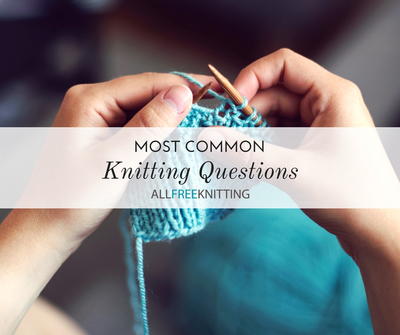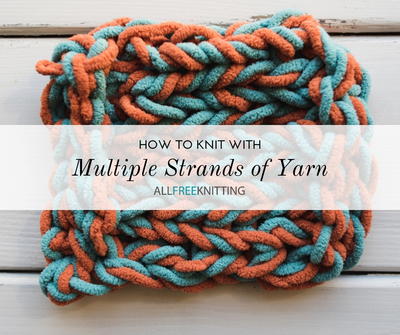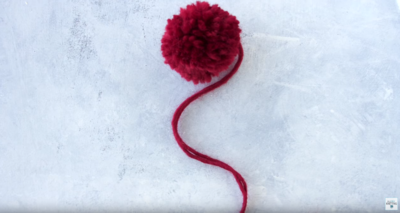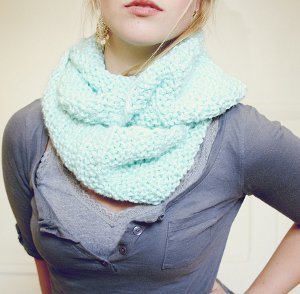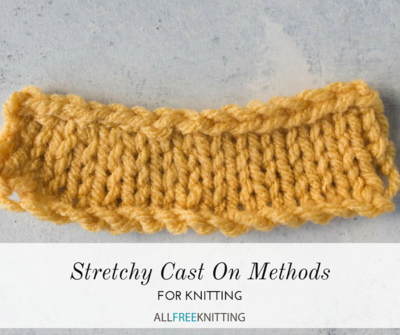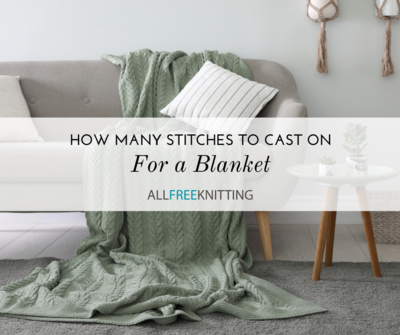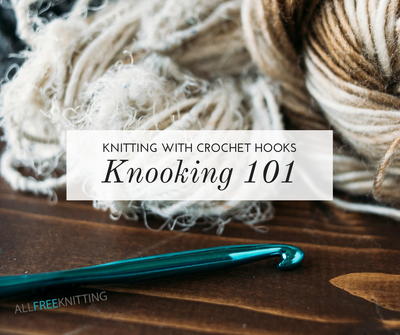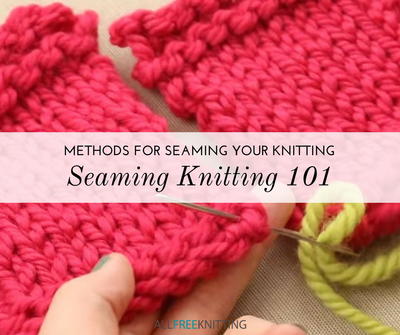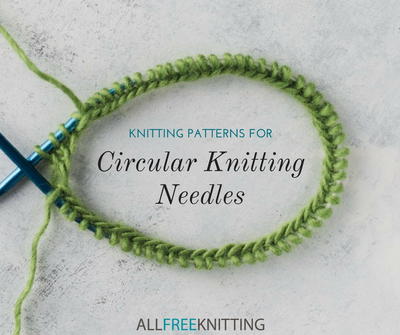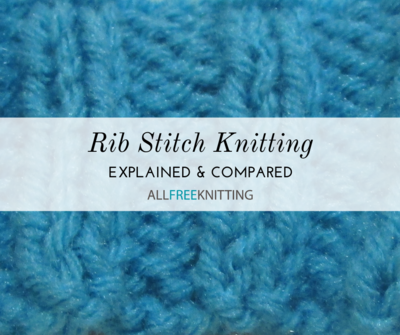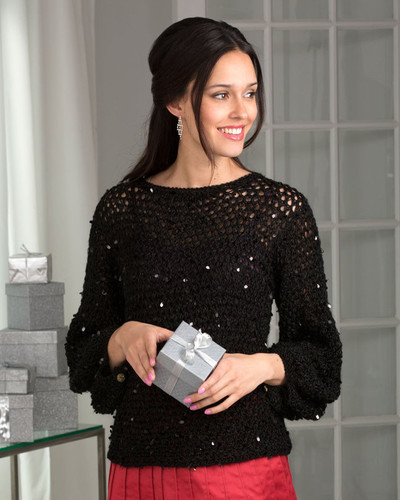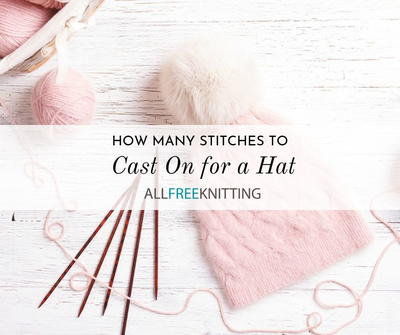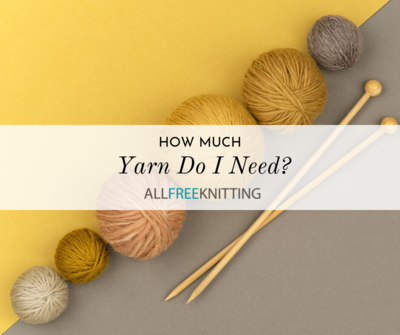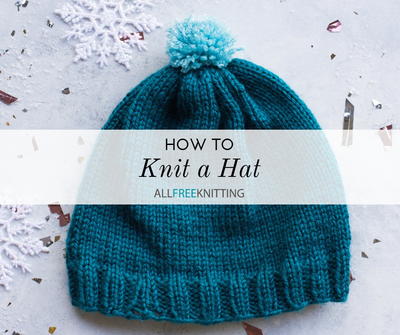10 Common Knitting Questions
Get all the knitting help you need by checking out the answers to these common questions about knitting. Plus, be sure to download our handy knitting abbreviations chart!
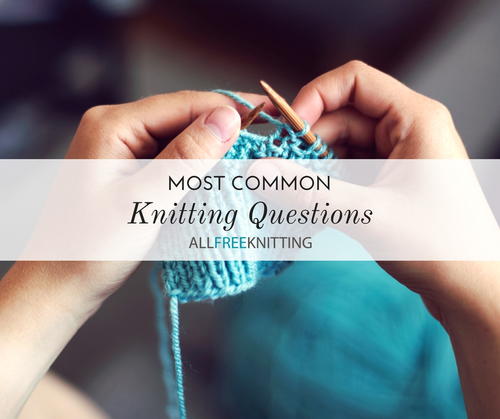
With a hobby as multifaceted as knitting, it’s no surprise there are certain inquiries that come up again and again. For your convenience, we’ve compiled answers to the most common knitting questions all in one place. We’re here to help clear up some of the confusion and make sure you’re able to work up any pattern you please with ease.
From ways to fix knitting mistakes to tips and tricks on how to master a certain stitch to the benefits of worsted weight yarn, beginner, intermediate, and advanced knitters can all benefit from this information.
Along with the material found on this page, it is also helpful to invest in a good reference book, sign up for a knitting class, and/or join a local knitting guild or group if you want to dive even deeper into the craft.
So, without further ado, let’s jump in and see what questions knitters of all skill levels have asked themselves at one point or another along the way!
How do I stop stockinette curling?
Curled edges are often a result of stockinette stitch (knit one row, purl one row). No, your yarn isn’t out to get you -- stockinette stitch curls due to the difference in the size of the knit stitches and purl stitches. The V-shaped knit stitches on the right side are wider than the bumpy, wavy purl stitches on the wrong side. Since the right side is wider than the wrong size, curling is inevitable.
Keep in mind if the edge is going to be within a seam, the curling does not matter. In other cases, to knit a simple, smooth edging on a scarf or similar garment, knit the first and last four stitches. Doing so forms an easy garter stitch border. If you’re feeling particularly ambitious, you may want to line your project with fabric. Adding a fabric backing to a blanket and even a few thoughtfully placed hand-sewn stitches will help the stockinette lie flat.
Knit designer Cassie May from littleredwindow.com offers this advice: "A good blocking takes care of a lot of curling problems. If that isn't working, then I will start over and add a border of garter stitch or seed stitch to the item to keep edges from curling. Although sometimes, like with my Little Santa Hat, you actually WANT the edges to curl and then you just leave it alone and embrace the curling!" Knit and crochet designer Jessie Rayot from jessieathome.com said she uses the wet blocking method to straighten out her stitches.
There are basically six different ways to stop stockinette from curling. Check out our article here:
How to stop stockinette from curling
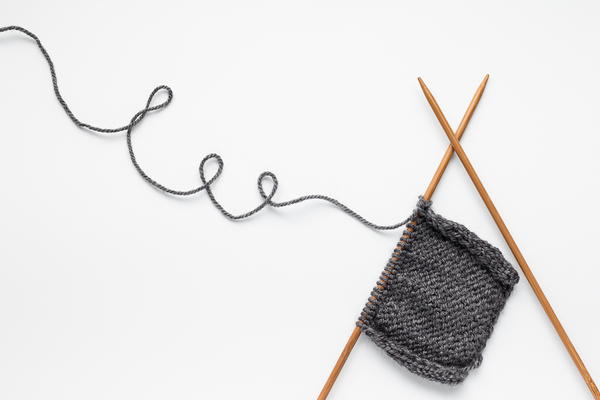
How do I knit with circular needles?
Circular needles can seem a bit intimidating at first, but as is the case with most knitting tools and techniques, a little practice goes a long way. To knit in the round with circular needles, cast on, as usual, using your preferred method. Prior to joining the work, carefully check to see if the cast on ridge lays on the inside of the needle and has not twisted or rolled around. A stitch marker should be placed at the beginning of the round to mark the spot where one row ends and the next begins.
When knitting in the round, there is no need to turn your work! Once you have knit into the first stitch cast on, two have joined the two sides of your work to make a tube. The first round is now complete. All knit stitches will be on the outside and all purl stitches inside. That means there is no wrong side row or round to your knitting; to do stockinette stitch in the round, there is no purling required.
Circular needles are oftentimes used to construct knit sweaters because knitting the body of a sweater in the round eliminates side seams. As such, the work is typically divided for front and back, working back and forth to form armholes and shape the neck. You can also use circular needles to finish necklines in instances when picking up stitches in a circular would be difficult to do with straight needles. You also have the option to knit flat pieces with circular needles; this is particularly useful for large projects like knit afghans.
Check out the video below to learn how to knit in the round using fixed circular needles.
How to knit with circular needles
How do I knit left-handed?
Knitting is a two-handed craft, which means you will use both your right and left hand to manipulate the yarn and needles. Don’t fret – the first steps of knitting can be a bit awkward regardless of which hand you use. However, with a little practice, the process becomes easier.
Learning how to knit in the traditional methods as right-handers learn will avoid future problems and inconsistencies with patterns and techniques.
In addition, left-handed knitters often find it easier to learn to knit continental style. The continental technique is taught in Europe and the yarn is held with the left hand rather than throwing the yarn over the needle with your right hand as you would if following U.S. instructions.

Somehow I have extra stitches. What do I do?
If you suddenly wind up with extra stitches, there are several things that could be the culprit. It could be that you accidentally picked up a stitch from an earlier row or that you split the yarn without noticing. This happens all the time, even with experienced knitters.
Accidental yarn overs will add stitches to the edge and in the middle of the row. Make sure you knit in the stitch and not the bar between the stitches and check to see if the yarn in the stitches is not split.
Luckily this is pretty easy to fix. You can do a simple knit 2 together decrease or a slip, slip, knit along the edge of your pattern in order to even out the number of stitches for the next row.
If you are knitting ribbing or cabling, you can easily incorporate the k2tog or SSK along one of these edges, and it should be well hidden from the right side of your fabric.
What does weaving in ends mean?
You will often see the phrase “weave in ends” under the "finishing" section of a knitting pattern. Weaving in your ends refers to any method of hiding the two tails of yarn on your project by weaving them into the fabric itself. There are various methods of doing this, but here's the most common:
1. With the wrong side facing, thread a tapestry needle with the end of the yarn.
2. Carefully weave the needle along the back of the stitches about 2 to 3 inches on a diagonal, gently pulling the yarn end.
3. Weave the other yarn end in the opposite direction.
4. When finished, gently stretch the fabric in all directions so the fabric does not pull.
5. Trim excess yarn ends.
What is gauge and why is it important?
Gauge is the measurement of the number of stitches and rows per inch of knitting. Most patterns will provide a measurement of gauge. For instance, if the pattern says, “8 sts (stitches) and 16 rows = 4 inches,” you know four inches of knitting in the pattern stitch would give you 16 rows and 8 stitches. Many yarn labels will also provide a gauge on their packaging. This information illustrates the number of stitches and rows per inch of knitting for the “average knitter” using the particular skein.
Since everyone knits a little differently, there’s a high probability if you give the same yarn and the same sized needles to two different knitters, they will come up with a different gauge. In addition, this gauge might be different than the gauge listed on the yarn label. For this reason, gauge is also sometimes referred to as tension. Some people knit loosely and some knit very tight, so your gauge will change accordingly.
Do you need to worry about gauge?
It depends on the project that you're working on. For knit articles that have specific sizes, like knit hats and sweater patterns, it's probably best to knit a gauge swatch before you begin the pattern. If your number of stitches and rows per inch do not match the pattern, the size of your finished product will be different from the pattern.
Gauge is not as critical when working up items such as scarves, but when it comes to sweaters, you want to make sure your tension is on point. Even if your gauge is off by a seemingly inconsequential amount -- one stitch per inch -- it will create a big size discrepancy in the end, and you could end up with a garment that's too big or too small. It’s also a good idea to wash and dry your gauge swatch to truly understand the size of the garment before beginning a new project.
As knit and crochet designer Ellen Thomas from thechillydog.com explains: "As a designer, swatching is an absolutely critical part of the design process. However, as a knitter, I’ll be the first to admit that when I am eager to follow a new pattern I avoid knitting a gauge swatch whenever possible. If you want to create the perfect piece and avoid disappointment, there are some instances when you should definitely take the time to knit a gauge swatch before casting on a new project."
Learn more about knitting gauge here:
How to calculate and adjust knitting gauge
There are holes in my knitting! How do I fix them?
If you have holes in your knitting, the first step is to know you’re not alone! New knitters frequently struggle with keeping their knitting the same width as they work since they inadvertently increasing or decreasing stitches as they go. Common increases like yarn overs can happen unintentionally, but they're easy to fix.
One other way holes often appear in your rows is by taking the working yarn over the needle as you begin a row. This will look like a whole new stitch in the next row. Sometimes if you pull up on the working yarn at the end of the row you’ll see the stitch from the row below will begin to look like a stitch you should knit, which will add a stitch without making such a dramatic hole. You can simply knit these two stitches together.
So, how do you fix these pesky holes?
The easiest solution is to simply unknit (also called tinking) beyond the hole and start knitting again from that point. You also have the option to rip out your stitches, or "frog," but beginners often get intimidated by this. You can also try working to the stitch you made with the yarn over and drop it on purpose until it no longer exists. However, this method will cause loose stitches as the work tries to absorb the extra yarn.
To avoid accidental yarn overs, be sure to count the number of stitches on your needle every few rows. If you have more than you started with, there’s a good chance you slipped in a yarn over at some point.
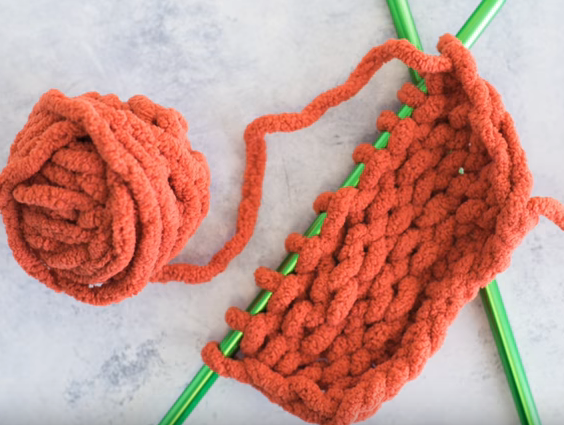
Why are my edges uneven?
Uneven edges are a common problem amongst beginner knitters. According to the Craft Yarn Council, uneven edges are typically a result of picking up an extra stitch at the end of the row when you knit into the loop of the stitch below. In order to avoid this problem, it’s best to check the last stitch as it goes on the right needle.
You should also make sure the first stitch at the beginning of a row is snug so loops from the stitches below do not wrap around the needle creating what looks like two stitches.
I put my knitting down in the middle of a row. How can I remember which direction I was going?
If you put your knitting down and no longer remember which direction you were going, there is no need to panic. The working yarn (the yarn connected to the ball or skein) will be hanging from the last stitch you worked. Make sure this stitch is on your right-hand needle once you resume working on the pattern.
Another way to keep track of where you are in any given pattern is to keep a knitting journal. Once you decide to stop knitting for the day, simply make note of where you left off and the direction you were working and you can easily pick up from that spot at a later date.
Knit designer Cassie May from littleredwindow.com provides this helpful tip: "I use post it notes or a little pencil mark to note where I am in the pattern. And then remember that the needles with the working yarn should be held in your right hand."
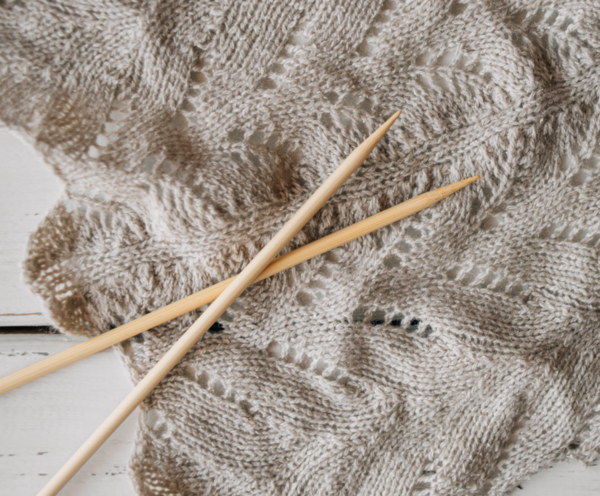
What do the abbreviations mean?
It’s true – knitters often communicate in a language all their own and since this special language is used as shorthand in patterns, it’s important to know what all the acronyms and symbols represent in order to read a pattern with ease.
The handy chart below will help you with the most common knitting translations. Designers and publishers may use special abbreviations in a pattern not found on this list, but a definition of special abbreviations is generally provided at the beginning of the pattern.
For your convenience, you can also download a handy printable version of the chart:
Most Common Knitting Abbreviations
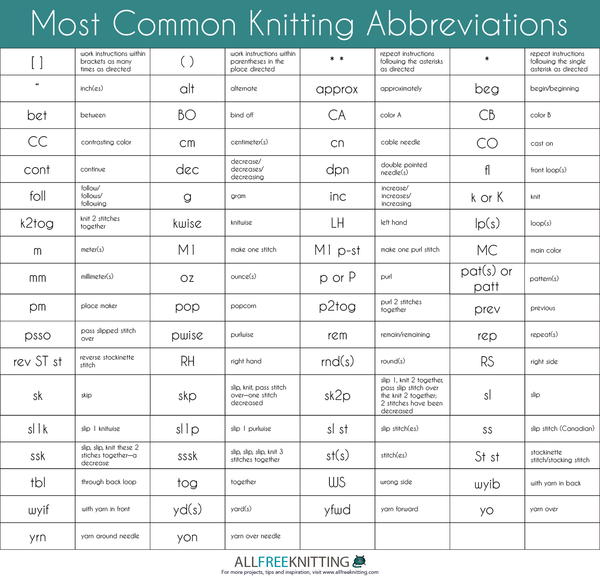
Knitting Questions Answered
So there you have it! The answers to the most common knitting questions in one convenient place. Whether it's translating knitting abbreviations or learning how to decipher between different knitting stitches, the beauty of this craft is there's always something new to learn and discover.
Didn't see your question here? Feel free to contact us:
Do you have a burning knitting question we didn't cover? Leave it in the comments section below and we'll do our best to provide an answer!
Your Recently Viewed Projects
margaret449hunt 98 06155
Sep 19, 2020
I am using 2 different colours of the same 4 ply yarn on the same row, but one is definitely finer than the other, which is causing the finer yarn to pull. What can I do?
CLRBELLS 2795167
Sep 09, 2020
i WOULD LIKE TO MAKE AN AFGHAN IN RED, WHITE AND BLUE YARN. i HAVE FOUND rED AND WHITE VARIGATED. CAN i ADD IN THE BLUE OR WILL IT
Lynda
Aug 31, 2018
I'm a beginner and want to know how to get smooth edges on both sides when knitting a multi-coloured scarf. Its only smooth on the knit side where I joined the two colours. On the other side it shows 'looped ' half-circle stitches. I'd like it to look smooth on both sides.
Lisa
Sep 02, 2018
What you refer to as the 'looped half circle" appears to be what is known as the bleed through line that occurs on the wrong side of the work and there is no way to correct, it is a fact of knitting with multiple colours.
whitkd 2049889
Jul 02, 2018
Hi, I have a pattern for a newborn hat that uses two double-ended needles. Is there any reason why I can just use a circular needle? Will it make any difference? kat
Kristina K
Jul 02, 2018
Hi whitkd! Is the pattern knit in the round? If so, double-ended needles are useful for when the hat has a smaller and smaller circumference the more decreases you work that would eventually get too tight for your circular knitting needles. However, there is a technique called the Magic Loop method that allows you to work small-circumference projects (like baby hats, sleeves, socks, the tops of adult hats, etc.) on long circular knitting needles, allowing you to avoid using double-pointed needles. We hope this helps! -Editors of AllFreeKnitting
lindagreykats 8815 452
Oct 10, 2017
When it says to pick up knit , should I pick up all sts and go back and knit them or do it stitch by stitch?
janlea 7622651
Aug 21, 2017
Trying to make this baby pattern work but don't know if I am reading the pattern wrong, I just don't have enough stitches left. I have cast on 65 stitches for 3rd size. The first line of the pattern reads P3 22111, k7, p3, rep from to last 10 99888 sts. K7, p3 22111 I cannot get this to work and in 4 hours have only succeeded in knitting 8 rows of rib! Can you help? Thanks
RachelAnne
Aug 21, 2017
These are such great answers! I definitely had some of these questions when I began knitting, and I wish I'd had a helpful resource like this for beginning knitters.
nataliegrace
Aug 18, 2017
It's one of the easier aspects of knitting, but I always have trouble weaving in the ends. This article is a great resource. Also, I will definitely be printing out a copy of the abbreviations chart!
KathrynAllison
Aug 17, 2017
Having the answers to all these questions in one place is so incredibly helpful! I especially appreciate the knitting abbreviations chart. I will definitely reference it whenever I read a new pattern.
Report Inappropriate Comment
Are you sure you would like to report this comment? It will be flagged for our moderators to take action.
Thank you for taking the time to improve the content on our site.

